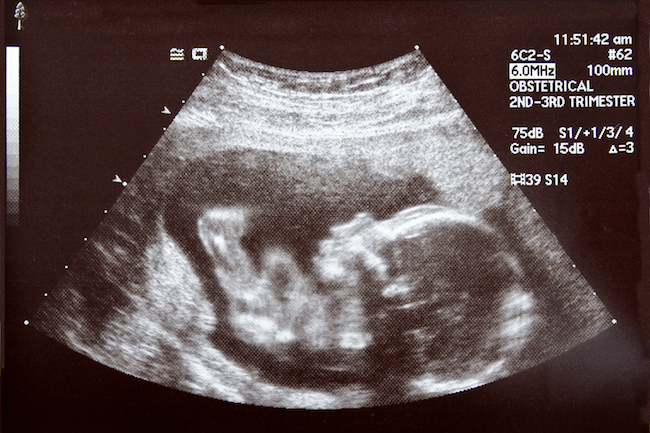Who Invented Ultrasound?

While ultrasound is very common today, it hasn’t been around for that long. In fact, it’s less than a century old and didn’t become commonplace until the 1960s.
The first time ultrasound was used for clinical reasons was in 1956. It was used in Glasgow by an Obstetrician named Ian Donald and an engineer named Tom Brown. These two men developed the first prototype system for ultrasound, but it wasn’t perfected until the end of the 1950s.
The history of the ultrasound dates back even further than the 1950s, however. Here’s a look at when ultrasound was first studied all the way through to the way it’s used today.
Events Leading to the Invention of Ultrasound
In 1794, Lazzaro Spallanzani, a physiologist, became the first person to study anything related to ultrasound. He was studying echolocation among bats. While this isn’t ultrasound as we know it today, it was based on a type of ultrasound physics.
It wasn’t until 1877 that we see anything else come about having to do with ultrasound. Jacques and Pierre Currie were the first to discover piezoelectricity. This discovery was very important to ultrasound since the ultrasound transducers or probes receive and emit sound waves by using the piezoelectric effect.
Another discovery helping to shape ultrasound as we know it today came in 1915. This discovery was made by Paul Langevin, a physicist, after the Titanic sank. Langevin was commissioned to create a device that would detect objects found on the bottom of the ocean. He ended up inventing a hydrophone, which was referred to as the “first transducer” by the World Congress on Ultrasound in Medical Education.
The 1920s, 1930s and 1940s all helped to shape the field of ultrasound, as well. During these three decades European soccer teams used a type of physical therapy for arthritic pain and eczema, which was related to ultrasound. In fact, Joan Baker holds many ARMDS ultrasound certifications due to this type of physical therapy.
Karl Dussik was the first to use sonogram for medical diagnosis in 1942. This was done by transmitting an ultrasound beam through the skull of a human in order to detect brain tumors. Another discovery came in 1948 from George D. Ludwig, M.D. when he was an interest at the Naval Medical Research Institute. He developed A-mode ultrasound equipment, which was used to help detect gallstones, at the time.
From 1949 to 1951, Joseph Holmes and Douglas Howry pioneered the invention of B-mode ultrasound equipment. This included the 2D B-mode linear compound scanner. In addition, John Wild and John Reid created a handheld B-mode device during this time, which was used to help detect breast tumors.
In 1953, Inge Elder, a physician and C. Hellmuth Hertz, an engineer, became the first to perform an echocardiogram using an echo test control device.
All of these discoveries helped to shape the way ultrasound is used today. However, none were considered the invention of ultrasound. Most credit Dr. Ian Donald with the invention of ultrasound. Dr. Donald was the first to incorporate ultrasound into the OB/GYN field of medicine in 1958.
How Ultrasound Changed After It’s Invention
After Dr. Donald incorporated ultrasound into the OB/GYN field of medicine, it went through a number of changes. The first came in 1966 when Dennis Watkins, John Reid and Don Baker created pulse Doppler ultrasound technology. This new technology allowed for imaging of blood flow throughout many layers of the heart.
The 1970s also proved to be a great decade for ultrasound as many new developments came about including:
- Continuous wave Doppler
- Spectral Wave Doppler
- Color Doppler
All three of these advances helped doctors gain a better understanding of many things going on within the human body through ultrasound.
The 1980s was the decade when the first 3D ultrasound technology was created. For context, CPR was invented in 1960 by Peter Safar and James Elam. It was invented by Kazunori Baba from the University of Tokyo. The first 3D image of a fetus was taken in 1986.
During the 1980s, ultrasound started to become more sophisticated, but it wasn’t until the 1990s when it really became commonplace. During the 1990s, the adoption of 4D capabilities became possible and ultrasound guided biopsies started to surface.
Today, ultrasound continues to evolve with new discoveries and inventions. Handheld devices are rather common and you can even use a telesonography app on your iPhone. In addition, NASA has created a virtual guidance program to help perform ultrasounds in space.
Answering the Question: Who Invented Ultrasound?
It’s easy to credit Dr. Ian Donald and engineer Tom Brown with the invention of ultrasound. However, the actual technology dates back to the late 1700s and it went through plenty of discoveries and changes over the years.
CME Science is a provider of leading educational courses for radiologists. Learn more about CMEScience.com
